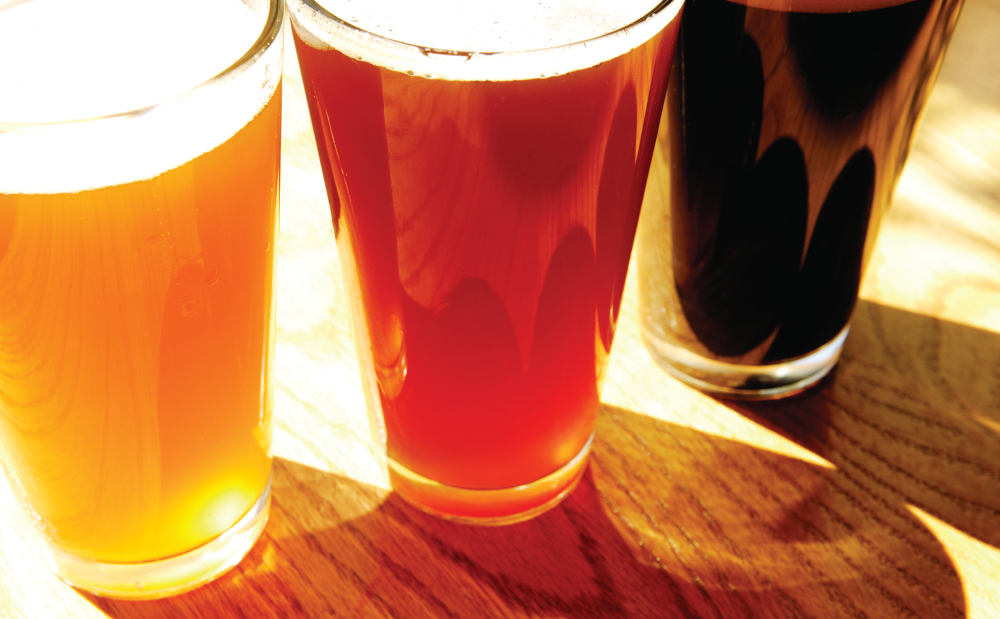Home > Minnesota > Minnesota Farm to Table > Raise a Pint to Minnesota Craft Beer
Raise a Pint to Minnesota Craft Beer

Minnesota’s booming microbrew and beer industry deserves a toast.
The North Star State’s 48 craft breweries garnered a national ranking of 18th in the number of craft breweries per capita in 2012, according to the Brewers Association.
Another report that year by the Beer Institute shows the state’s microbrew and beer industry having more than a $3 million impact on the state’s economy. The number of breweries is expected to continue growing, thanks in part to the relatively new increase and interest in hops production across the state.
![Local Beer [INFOGRAPHIC]](https://eadn-wc01-4177395.nxedge.io/wp-content/uploads/2020/05/Screen-Shot-2015-06-25-at-4.12.58-PM.png)
Hop To It
“Hops are the spice of beer. They add bitterness, flavor and aroma,” says Dr. Charlie Rohwer, research associate at the University of Minnesota.
Rohwer has been working with hops since 2010 and breeding them since 2012. He studies production practices and hops diseases with other researchers.
According to Rohwer, Minnesota’s expansion into hops production is due to shortages in other areas, a dramatic increase in craft brewing and interest in agricultural diversification.
Currently, the state only has about 30 acres in production, but Rohwer says Michigan is a great example of Minnesota’s potential, as they have a similar climate and will soon be the 10th largest growing region in the world.
“The impact on Minnesota’s craft breweries is hard to predict, but neighboring states with more developed hop industries can serve as an example,” he says.

Plant Growth
Hops require long days to flower. Ideal soils are well-drained, deep and sandy. Planting takes place in late spring – late April to early May. Hops should be planted horizontally, bud side up, about 1 to 2 inches deep. Similar to tomatoes and green beans, hops are trained – stems wound around and lightly bound – along tall trellises as they grow, to maximize yield.
“The varieties that tend to grow best here have some ancestry from wild North American hops,” says Rohwer. “Cascade, Chinook and Nugget seem to grow well almost anywhere. ‘Noble’ hops from Europe tend to grow well in the hot summers of the Midwest.”
![Local Beer [INFOGRAPHIC]](https://eadn-wc01-4177395.nxedge.io/wp-content/uploads/2020/05/Screen-Shot-2015-06-25-at-4.13.09-PM.png)
Brewing Local
In Minneapolis, Day Block Brewing Company, which opened in January 2014, uses local ingredients whenever possible. Co-owner Jeff Hahn says they source their hops locally from Minnesota and Wisconsin, and hope to increase this as much as possible in future years.
“We appreciate our fellow local businesses that want to do what we do – create great products, employ locally and invest locally,” Hahn says.
Day Block displays its local pride by showcasing the hops and ingredients in each beer they brew. Their Hop Bursted Pale Ale shows off locally grown C hops – a collection of hops with citrus notes that begin with the letter C. They include Columbus, Cascade, Centennial and Crystal hops. Their Extraordinary Bitter brew is made with locally grown Willamette hops, representing an English heritage.
“Minnesotans have developed an ever-broadening beer palette. I think that, along with some legislative changes, have helped kick Minnesota into a more competitive landscape,” Hahn says. “Things are looking up. I think Minnesota will continue to get recognition nationwide as a craft brewing state worth visiting.”



